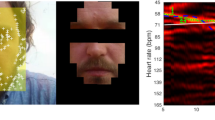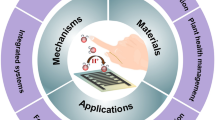Abstract
Pulse rate is one of the major physiological parameters for monitoring of cardiovascular conditions or excise states during daily life. However it is difficult to precisely measure the exact pulse rates as photoplethysmography (PPG) is easy to be affected by motion artifacts. Instead of using accelerometers followed by algorithms such as least mean square (LMS), recursive least square (RLS) and independent component analysis (ICA) or other equipment such as complex laser systems to measure displacement directly, a novel motion artifact estimation method which had lower computational complexity and higher signal dynamic range was studied and implemented, where a differential channel following green and red light PPG channels was applied to reduce the motion artifact caused by displacement of light emitting diode (LED), photo diode (PD) and tissue deformation before the analog signal was converted to digital form. A miniaturized, battery powered wrist worn artifact-resistive pulse rates monitoring system (PRMS) was presented to verify the proposed method. Four kinds of motions were performed and the results showed that the differential channel improved the morphology of the PPG signal and appeared to be artifact resistive during motions through light intensity control and high gain-phase consistency circuit design here.








Similar content being viewed by others
References
Allen, J., Photoplethysmography and its application in clinical physiological measurement. Physiol. Meas. 28(3):R1–R39, 2007.
Challoner, A. V. J., Photoelectric plethysmography for estimating cutaneous blood flow. Non-invasive Physiol. Meas. 1:125–151, 1979.
Pujary, C. J., Investigation of photodetector optimization in reducing power consumption by a noninvasive pulse oximeter sensor. Worcester Polytechnic Institute. 2004.
Loukogeorgakis, S., Dawson, R., Phillips, N., Martyn, C. N., and Greenwald, S. E., Validation of a device to measure arterial pulse wave velocity by a photoplethysmographic method. Physiol. Meas. 23(3):581, 2002.
Grabovskis, A., Marcinkevics, Z., Lukstina, Z., Majauska, M., Aivars, J., Lusa, V., and Kalinina, A., Usability of photoplethysmography method in estimation of conduit artery stiffness. European Conference on Biomedical Optics. Optical Society of America, 2011.
Bagha, S., and Shaw, L., A real time analysis of PPG signal for measurement of SpO2 and pulse rate. Int. J. Comput. Appl. 36(11):45–50, 2011.
Varma, D., Shete, V. V., and Somani, S. B., Development of home health care self monitoring system. Development 4:6, 2015.
Zhou, C., Tu, C., Tian, J., Feng, J., Gao, Y., and Ye, X., A low power miniaturized monitoring system of six human physiological parameters based on wearable body sensor network. Sens. Rev. 35(2):210–218, 2015.
Cui, W. J., Ostrander, L. E., and Lee, B. Y., In vivo reflectance of blood and tissue as a function of light wavelength. IEEE Trans. Biomed. Eng. 37(6):632–639, 1990.
Spigulis, J., Gailite, L., Lihachev, A., and Erts, R., Simultaneous recording of skin blood pulsations at different vascular depths by multiwavelength photoplethysmography. Appl. Opt. 46(10):1754–1759, 2007.
Watanabe, K., Watanabe, T., Watanabe, H., Ando, H., Ishikawa, T., and Kobayashi, K., Noninvasive measurement of heartbeat, respiration, snoring and body move- ments of a subject in bed via a pneumatic method. IEEE Trans. Biomed. Eng. 52(12):2100–2107, 2005.
Xiong, Y., and Quek, F., Hand motion gesture frequency properties and multimodal discourse analysis. Int. J. Comput. Vis. 69(3):353–371, 2006.
Zhou, C. C., Tu, C. L., Gao, Y., Wang, F. X., Gong, H. W., Lian, P., and Ye, X. S., A low-power, wireless, wrist-worn device for long time heart rate monitoring and fall detection. 2014 I.E. International Conference on Orange Technologies (ICOT). pp: 33–36, 2014.
Kviesis-Kipge, E., Grabovskis, A., Marcinkevics, Z., Mecnika, V., and Rubenis, O., Wearable photoplethysmography device prototype for wireless cardiovascular monitoring. In: SPIE Photonics Europe. International Society for Optics and Photonics. pp: 91292I-91292I, 2014.
Maeda, Y., Sekine, M., and Tamura, T., Relationship between measurement site and motion artifacts in wearable reflected photoplethysmography. J. Med. Syst. 35(5):969–976, 2011.
Maeda, Y., Sekine, M., and Tamura, T., The advantages of wearable green reflected photoplethysmography. J. Med. Syst. 35(5):829–834, 2011.
Asada, H. H., Jiang, H. H., and Gibbs, P., Active noise cancellation using MEMS accelerometers for motion-tolerant wearable bio-sensors. 26th Annual International Conference of the IEEE Engineering in Medicine and Biology Society. 1:2157–2160, 2004.
Rhee, S., Design and analysis of artifact-resistive finger photoplethysmographic sensors for vital sign monitoring. Diss. Massachusetts Institute of Technology, 2000.
Wood, L. B., and Asada, H. H., Low variance adaptive filter for cancelling motion artifact in wearable photoplethysmogram sensor signals. in Proc. Conf. IEEE Eng. Med. Biol. Soc. pp: 652–655, 2007.
Kim, S. H., Ryoo, D. W., and Bae, C., Adaptive noise cancellation using accelerometers for the PPG signal from forehead. in Proc. Conf. IEEE Eng. Med. Biol. Soc. pp: 2564–2567, 2007.
Yousefi, R., Nourani, M., Ostadabbas, S., and Panahi, I., A motion-tolerant adaptive algorithm for wearable photoplethysmographic biosensors. IEEE J. Biomed. Health Inform. 18(2):670–681, 2014.
Park, C. K., Sohn, J. C., Kim, J. H., and Choi, H. J., Artifact-resistant design of a wrist-type heart rate monitoring device. Advanced Communication Technology, 2009. ICACT 2009. 11th International Conference on. 3:2313–2316, 2009.
Hertzman, A. B., Randall, W. C., and Jochim, K. E., Relations between cutaneous blood flow and blood content in the finger pad, forearm and forehead. Am. J. Physiol. 150(1):122–132, 1947.
Hertzman, A. B., and Randakk, W. C., Regional differences in the basal and maxima rates of blood flow in skin. J. Appl. Physiol. 1(3):234–241, 1948.
Feng, S., Zeng, F. A., and Chance, B., Photon migration in the presence of a single defect: a perturbation analysis. Appl. Opt. 34(19):3826–3837, 1995.
Mateus, J., and Hargens, A. R., Photoplethysmography for non-invasive in vivo measurement of bone hemodynamics. Physiol. Meas. 33(6):1027, 2012.
Grabovskis, A., Marcinkevics, Z., Rubins, U., and Kviesis-Kipge, E., Effect of probe contact pressure on the photoplethysmographic assessment of conduit artery stiffness. J. Biomed. Opt. 18(2):027004–027004, 2013.
Teng, X. F., and Zhang, Y. T., Theoretical study on the effect of sensor contact force on pulse transit time. IEEE Trans. Biomed. Eng. 54(8):1490–1498, 2007.
Mannheimer, P. D., The light-tissue interaction of pulse oximetry. Anesth Analg. 105(6):S10–S17, 2007.
Han, H., and Kim, J., Artifacts in wearable photoplethysmographs during daily life motions and their reduction with least mean square based active noise cancellation method. Comput. Biol. Med. 42(4):387–393, 2012.
Wijshoff, R. W. C. G. R., Veen, J., et al., PPG motion artifact handling using a self-mixing interferometric sensor. SPIE 7894: Optical Fibers, Sensors, and Devices for Biomedical Diagnostics and Treatment XI; doi: 10.1117/12.874170. SPIE, 2011.
Acknowledgments
This work is supported by National Science and Technology Major Project of the Ministry of Science and Technology of China (No.2013ZX03005008).
Author information
Authors and Affiliations
Corresponding author
Additional information
This article is part of the Topical Collection on Mobile Systems
Rights and permissions
About this article
Cite this article
Zhou, C., Feng, J., Hu, J. et al. Study of Artifact-Resistive Technology Based on a Novel Dual Photoplethysmography Method for Wearable Pulse Rate Monitors. J Med Syst 40, 56 (2016). https://doi.org/10.1007/s10916-015-0412-2
Received:
Accepted:
Published:
DOI: https://doi.org/10.1007/s10916-015-0412-2




